Turtles are remarkable creatures that have evolved to survive in a wide range of environments, both aquatic and terrestrial. One of their most fascinating abilities is holding their breath for extended periods while underwater. The question of how long can a turtle hold its breath often arises when considering their aquatic lifestyle, and the answer depends on a variety of factors including species, environmental conditions, and their activity level.
In this article, we will explore the diverse turtle species, examine the physiological mechanisms that allow them to hold their breath, and consider how human-induced environmental changes can impact their ability to survive. From sea turtles diving deep in the ocean to freshwater turtles hibernating beneath ice, understanding how long can a turtle hold its breath offers insight into the amazing adaptability of these animals.
1. Different Types of Turtles and Their Habitats
Turtles are found in various environments, from rivers and ponds to oceans and dry land. Each habitat presents different challenges, which have shaped the adaptations of different turtle species. Knowing how long can a turtle hold its breath varies depending on the species and its environment.
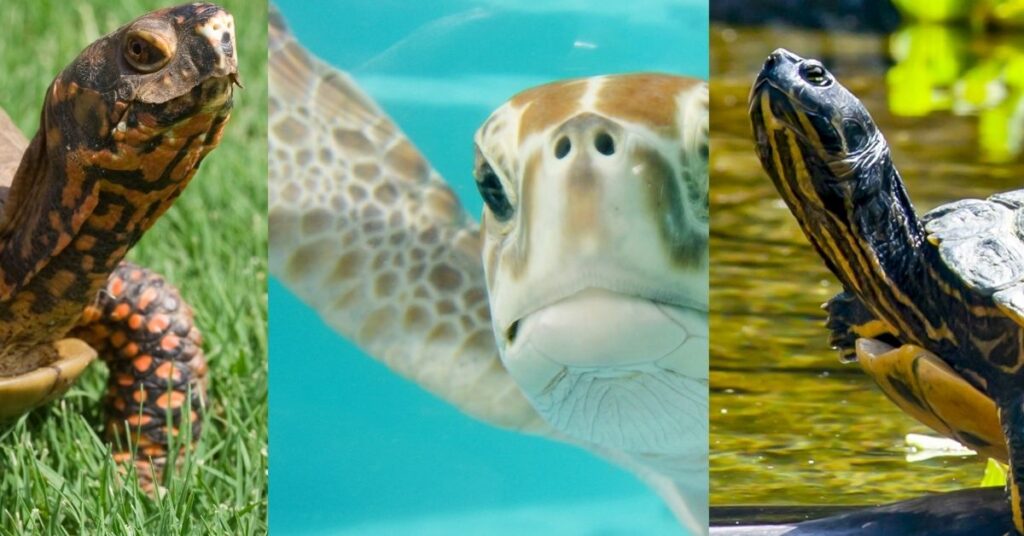
1.1. Freshwater Turtles
Freshwater turtles, such as the painted turtle and snapping turtle, live in ponds, lakes, rivers, and wetlands. These turtles spend a significant amount of time submerged but must surface regularly to breathe. Freshwater turtles have evolved mechanisms to stay underwater for extended periods, especially during hibernation.
- Painted Turtle: One of the best examples of a freshwater species that can hold its breath for long periods, especially during hibernation under ice.
- Snapping Turtle: Known for their aggressive nature, snapping turtles can stay underwater for long stretches, particularly when resting or hunting.
1.2. Sea Turtles
Sea turtles are perhaps the best-known species when people wonder how long can a turtle hold its breath. Sea turtles are capable of holding their breath for hours, especially when resting or sleeping underwater. They regularly undertake long dives while searching for food and can reach impressive depths.
- Leatherback Turtle: This species holds the record for the longest dives and deepest dives among sea turtles, staying underwater for over 85 minutes in some cases.
- Green Sea Turtle: A well-known herbivorous sea turtle that can remain submerged for up to several hours when resting.
1.3. Tortoises
Unlike their aquatic cousins, tortoises are primarily land-dwelling and have no need for prolonged breath-holding. While tortoises can submerge themselves in water for short periods, their physiology is not designed for extended underwater activities.
- Desert Tortoise: These tortoises are better adapted to arid environments than aquatic habitats, and their breath-holding abilities are limited to just a few minutes when submerged.
Each species’ ability to hold its breath is deeply connected to its environment and lifestyle. For turtles that live in water, holding their breath is a survival tool, while land-dwelling tortoises rely more on water conservation than on breath-holding.
2. How Long Can a Turtle Hold Its Breath: Physiological Mechanisms
Understanding how long can a turtle hold its breath requires a closer look at their unique respiratory system. Unlike mammals, turtles have evolved several physiological traits that allow them to extract and store oxygen efficiently, as well as survive in low-oxygen environments.
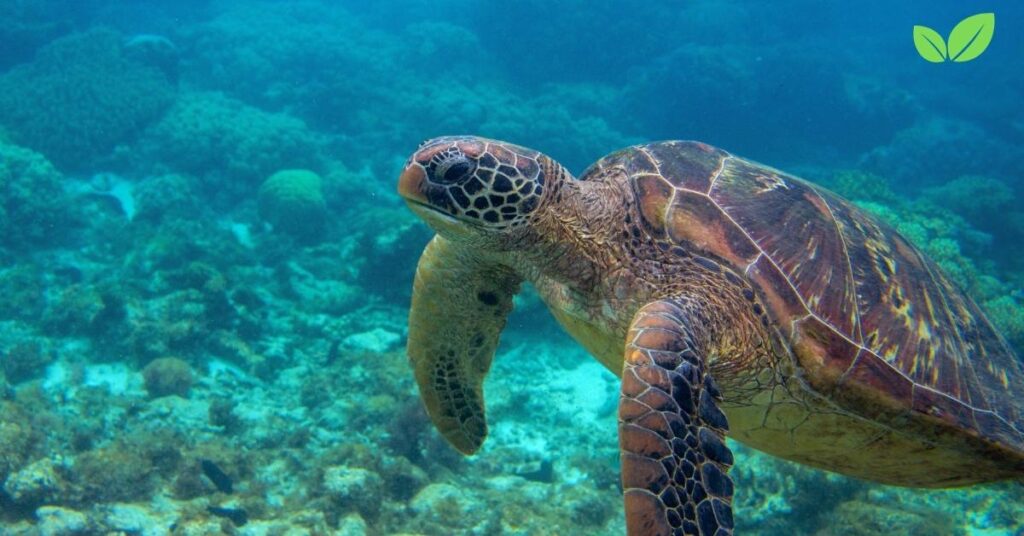
2.1. Turtle Lungs and Oxygen Storage
Turtles rely on their lungs to breathe, but their lungs function differently from those of mammals. Turtles have large lungs relative to their body size, allowing them to store a significant amount of oxygen when they take a breath.
- Efficient Gas Exchange: Turtles have highly efficient gas exchange systems that allow them to maximize oxygen intake with each breath. This, combined with their ability to store oxygen in their blood and muscles, allows them to remain submerged for long periods.
- Slow Metabolism: A turtle’s slow metabolism also plays a key role in determining how long can a turtle hold its breath. By conserving energy, turtles reduce their need for oxygen and extend the time they can stay underwater.
2.2. Anaerobic Respiration
When a turtle is underwater for extended periods and runs out of oxygen, it switches to anaerobic respiration. This process allows the turtle to continue producing energy without oxygen, although it is less efficient and leads to the buildup of lactic acid in the body.
- Tolerance to Lactic Acid: Turtles have an impressive tolerance to the buildup of lactic acid, enabling them to survive extended periods of anaerobic respiration. However, turtles must eventually surface to breathe and remove excess lactic acid from their system.
2.3. Cloacal Respiration and Cutaneous Respiration
Some freshwater turtles, such as the painted turtle, have developed additional adaptations for surviving underwater. These turtles can perform cloacal respiration, which allows them to extract oxygen through their cloaca. In addition, some turtles use cutaneous respiration, absorbing oxygen through their skin, particularly in cold or oxygen-poor environments.
- Hibernation Adaptations: Freshwater turtles that hibernate underwater during winter rely heavily on these forms of respiration to survive for months without surfacing.
These unique respiratory adaptations make turtles exceptional in their ability to survive in aquatic environments, answering the question of how long can a turtle hold its breath with a complex mix of physiological traits and environmental responses.
3. How Long Can Different Turtles Hold Their Breath?
The exact duration of how long can a turtle hold its breath varies by species and environmental conditions. From sea turtles diving in the ocean to freshwater turtles hibernating beneath ice, each species has a different answer to this question.
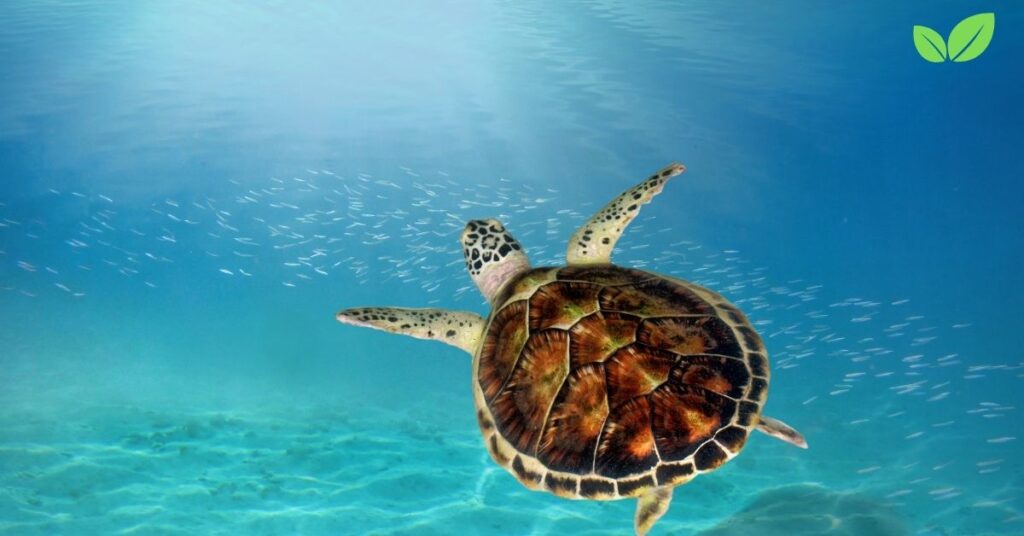
3.1. Sea Turtles
Sea turtles are among the most skilled breath-holders, capable of remaining submerged for hours depending on their activity level. Typically, sea turtles hold their breath for about 45 minutes to an hour during regular dives, though they can remain underwater for much longer during periods of rest.
- Leatherback Sea Turtle: Known for setting records in terms of dive length and depth, leatherback turtles can remain submerged for up to 85 minutes and dive to depths of over 1,000 meters (3,280 feet).
- Green Sea Turtle: During periods of rest, green sea turtles can hold their breath for up to five hours, conserving oxygen and energy while remaining submerged.
3.2. Freshwater Turtles
Freshwater turtles, while not diving to the same depths as sea turtles, have evolved to hold their breath for considerable lengths of time, particularly during hibernation. Freshwater species such as painted turtles and snapping turtles demonstrate incredible breath-holding abilities during colder months.
- Painted Turtle: During hibernation, painted turtles can remain submerged for up to six months beneath frozen ponds, relying on cloacal and cutaneous respiration.
- Snapping Turtle: Snapping turtles, which are larger and more aggressive, can stay underwater for about 30 to 50 minutes during active periods, though they can hold their breath for longer when resting or hibernating.
3.3. Tortoises
Tortoises, being land dwellers, do not need to hold their breath for long. Most tortoises can hold their breath for only a few minutes when submerged in water, as they are not adapted for an aquatic lifestyle.
- Desert Tortoise: As a terrestrial species, desert tortoises have minimal breath-holding capabilities. They rely on behavioral adaptations to conserve water rather than extended breath-holding underwater.
4. Environmental Factors Influencing Breath-Holding Abilities
Environmental factors play a significant role in how long can a turtle hold its breath. From water temperature to oxygen levels and human impacts, these factors can enhance or limit a turtle’s ability to remain submerged for extended periods.
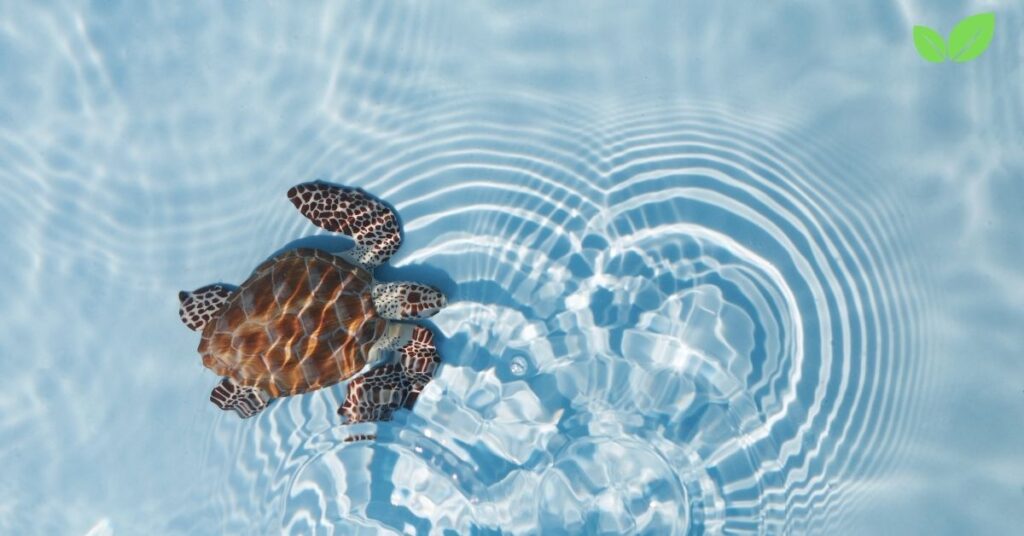
4.1. Water Temperature
Water temperature is a critical factor in determining how long can a turtle hold its breath. Turtles are ectothermic, meaning their body temperature is influenced by their surroundings. Cold water slows their metabolism, allowing turtles to conserve oxygen and remain submerged longer.
- Cold Water and Hibernation: In cold water, freshwater turtles can enter a state of near-dormancy, drastically reducing their oxygen needs. Painted turtles, for example, can survive for months in frozen ponds using anaerobic and cloacal respiration.
- Warm Water and Increased Activity: In warmer water, turtles become more active, which increases their oxygen consumption. As a result, they need to surface more frequently, shortening the amount of time they can hold their breath.
4.2. Oxygen Levels in Water
Oxygen levels in the water also affect how long can a turtle hold its breath. Turtles living in oxygen-rich environments can stay submerged longer, while those in hypoxic (low-oxygen) conditions may struggle to extract enough oxygen.
- Oxygen-Rich Waters: Rivers and streams with high oxygen levels allow freshwater turtles to stay underwater longer, especially when resting or foraging.
- Hypoxic Conditions: In oxygen-poor environments, such as stagnant ponds or polluted waters, turtles may need to surface more frequently to breathe.
4.3. Human Impact and Environmental Changes
Human activities, such as water pollution, habitat destruction, and climate change, can negatively impact how long can a turtle hold its breath. Pollution can reduce water quality and oxygen levels, making it harder for turtles to extract oxygen, while habitat destruction may limit their ability to find suitable environments for hibernation or nesting.
5. Conclusion: How Long Can a Turtle Hold Its Breath?

The answer to how long can a turtle hold its breath varies widely depending on the species, their environment, and specific circumstances like activity level or water temperature. While sea turtles can remain submerged for up to several hours when resting, freshwater turtles may hold their breath for even longer during hibernation, sometimes lasting months under ice. Meanwhile, tortoises, as primarily terrestrial animals, can only hold their breath for a few minutes when submerged.
Understanding how long can a turtle hold its breath provides insight into the remarkable adaptability of these creatures and highlights the delicate balance between physiology and environmental conditions that allows turtles to thrive in such varied habitats. However, this ability is not without its challenges, as climate change, pollution, and habitat destruction continue to threaten their survival.
6. Conservation Efforts to Protect Turtle Habitats
Given the environmental pressures turtles face, conservation efforts are essential to ensure their long-term survival. Protecting key habitats, improving water quality, and addressing the impacts of climate change will help safeguard turtle populations and their unique ability to hold their breath for extended periods.
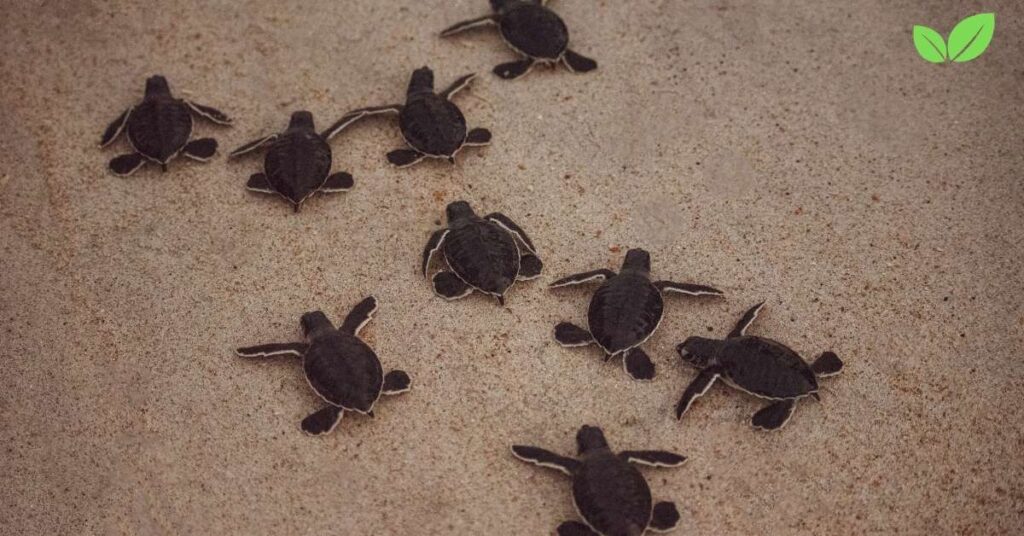
6.1. Marine Protected Areas
For sea turtles, marine protected areas (MPAs) play a crucial role in preserving critical habitats such as nesting beaches and feeding grounds. MPAs restrict human activities like fishing and development, giving sea turtles safe areas to forage, migrate, and nest. By protecting these areas, sea turtles can continue to use their remarkable breath-holding abilities to forage and migrate over long distances without the added stress of human interference.
- Turtle Excluder Devices (TEDs): In commercial fishing, the use of Turtle Excluder Devices helps reduce accidental turtle deaths by allowing them to escape from fishing nets. This ensures that sea turtles can surface to breathe, preventing them from drowning.
6.2. Wetland and Freshwater Ecosystem Restoration
For freshwater turtles, protecting and restoring wetlands, rivers, and ponds is essential to ensure that they have access to oxygen-rich environments for both active periods and hibernation. Habitat destruction, often caused by development, pollution, or agricultural runoff, threatens the delicate balance of oxygen levels in these ecosystems, impacting turtles’ ability to remain submerged for extended periods.
- Water Quality Initiatives: Efforts to reduce water pollution and improve water quality, such as reducing pesticide use and preventing runoff from farms, can enhance the health of freshwater ecosystems. This ensures turtles have access to clean, oxygen-rich water, which supports their natural breath-holding abilities.
6.3. Climate Change Mitigation
Climate change is one of the most significant long-term threats to turtle habitats worldwide. Rising temperatures, altered precipitation patterns, and shifting ecosystems all impact turtle behavior, nesting, and even their ability to hold their breath. Warmer water temperatures can increase turtles’ metabolic rates, shortening the amount of time they can remain submerged, while melting ice and rising sea levels threaten their habitats.
- Carbon Emission Reductions: Global efforts to reduce carbon emissions and slow the pace of climate change are essential for protecting the ecosystems turtles depend on. By mitigating climate change, conservationists can help maintain stable environments that support turtle populations and their ability to thrive in aquatic habitats.
6.4. Public Education and Advocacy
Educating the public about the importance of turtles and their habitats is another vital aspect of conservation. Through educational programs, wildlife organizations can raise awareness about the challenges turtles face and encourage people to take action, whether by reducing plastic use, supporting habitat conservation, or advocating for stronger environmental policies.
- Reducing Plastic Pollution: Public campaigns focused on reducing plastic waste—one of the most significant threats to sea turtles—can help prevent turtles from ingesting or becoming entangled in debris. Fewer plastics in the oceans mean fewer obstacles for sea turtles, allowing them to use their breath-holding abilities for deep dives rather than struggling to survive in polluted waters.
7. Conclusion: The Amazing Breath-Holding Abilities of Turtles
The question of how long can a turtle hold its breath opens the door to understanding the remarkable adaptations these creatures have developed to survive in both aquatic and terrestrial environments. Sea turtles, with their ability to dive deep and stay submerged for hours, and freshwater turtles, which can hibernate beneath ice for months, all showcase the incredible diversity of life on Earth.
However, these abilities are not invincible. As human activity continues to impact the environment, turtles face increasing threats that could limit their ability to thrive in their natural habitats. By supporting conservation efforts, reducing pollution, and taking action against climate change, we can help protect these fascinating creatures and ensure they continue to demonstrate their extraordinary breath-holding abilities for generations to come.
8. FAQs: How Long Can a Turtle Hold Its Breath?
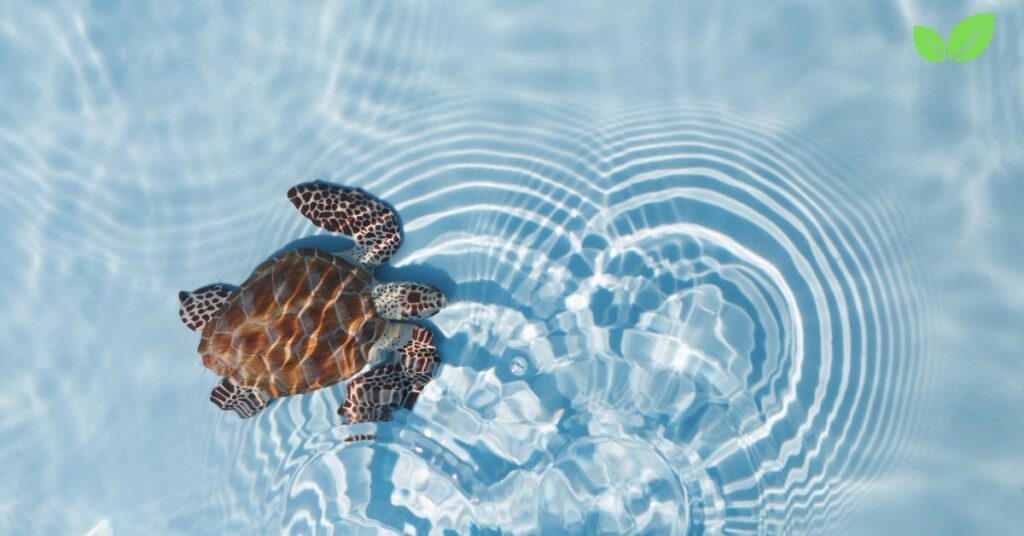
8.1. How long can a sea turtle hold its breath?
Sea turtles can hold their breath for anywhere between 45 minutes to several hours, depending on their activity. During active periods, such as foraging or escaping predators, they may surface more frequently. However, when resting, they can remain submerged for up to 5 hours.
8.2. How long can freshwater turtles hold their breath?
Freshwater turtles can hold their breath for up to 30–50 minutes during active periods, such as swimming or foraging. During hibernation in cold water, some freshwater turtles, like painted turtles, can hold their breath for several months using specialized adaptations like cloacal respiration.
8.3. Can turtles drown?
Yes, turtles can drown if they are unable to surface for air. This is particularly a risk in polluted waters where debris or fishing gear might trap them, preventing them from reaching the surface to breathe.
8.4. How long can tortoises hold their breath?
Tortoises are not adapted for aquatic environments and can only hold their breath for a few minutes. Unlike sea and freshwater turtles, tortoises primarily live on land and do not require extended breath-holding capabilities.
8.5. Does water temperature affect how long a turtle can hold its breath?
Yes, water temperature plays a significant role in how long a turtle can hold its breath. In colder water, turtles can slow their metabolism, reducing their oxygen needs and extending their breath-holding time. In warmer water, turtles become more active and need to surface more frequently for air.
8.6. How does pollution affect a turtle’s ability to hold its breath?
Pollution, particularly in water bodies, can reduce oxygen levels and introduce toxins that make it harder for turtles to breathe efficiently. This can shorten the amount of time a turtle can remain submerged, increase stress, and in severe cases, lead to drowning if the turtle becomes entangled in debris.
Read More: Are Turtles Reptiles or Amphibians? Exploring Their Environmental Niche, Classification, and Ecology

